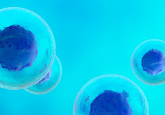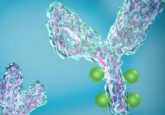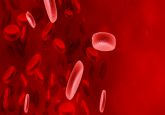Nanotherapy produces positive results in animal models of multiple myeloma

Researchers at Washington University School of Medicine in St. Louis (MO, USA) have designed a novel nanoparticle-based therapy that has proved effective in targeting therapy in mice with multiple myeloma. The nanoparticles are targeted at malignant cells and protect the therapeutic cargo from degradation in the blood stream, improving drug delivery to the site of the cancer. The research appeared recently online in the journal Molecular Cancer Therapy.
The drug compound carried by the nanoparticles blocks Myc proteins, which are known to be active in many cancer types. Previous research has demonstrated that the effect of Myc inhibitors greatly decreases when injected into the blood, despite promising efficacy in vitro. The current study is the first to show the therapeutic potential of Myc inhibitors in animal models when the therapeutic agent has a protective vehicle.
When the mice with myeloma were injected with the nanoparticles containing the Myc inhibitor, survival time was demonstrated to be 52 days, compared with 29 days in mice injected with nanoparticles minus the Myc inhibitor. It was also demonstrated that the injection of Myc inhibitor without a nanoparticle resulted in no survival benefit.
“We’re excited about our results because there was no guarantee the nanotherapy would increase survival,” commented author Michael H Tomasson. “We injected the nanoparticles intravenously, and they found the tumors throughout the body, whether they were in the bone marrow, the spleen or elsewhere.”
Tomasson collaborated with nanomedicine expert Gregory M Lanza on the study. They suspected that Myc inhibitors would offer a viable treatment strategy if effective circulating levels could be maintained and delivered to the appropriate cells.
“The nanoparticles serve as vehicles that protect the drug from the harsh environment of the blood,” Lanza explained. “In this case, the drug is modified into a prodrug and actually locked into the outer membrane of the particle.”
Lanza was also responsible for designing the nanoparticles and incorporating receptors that enable the nanoparticle to bind to malignant cells, facilitating the transfer of the drug into the cell. Once inside the cell, the drug is able to prevent Myc activation.
The researchers state that noncancerous cells are unlikely to suffer adverse effects caused by Myc inhibition due to the fact that they shouldn’t have highly activated Myc proteins in the first instance. Tomasson and Lanza also acknowledge that this technology is far from being ready to be tested in human subjects.




